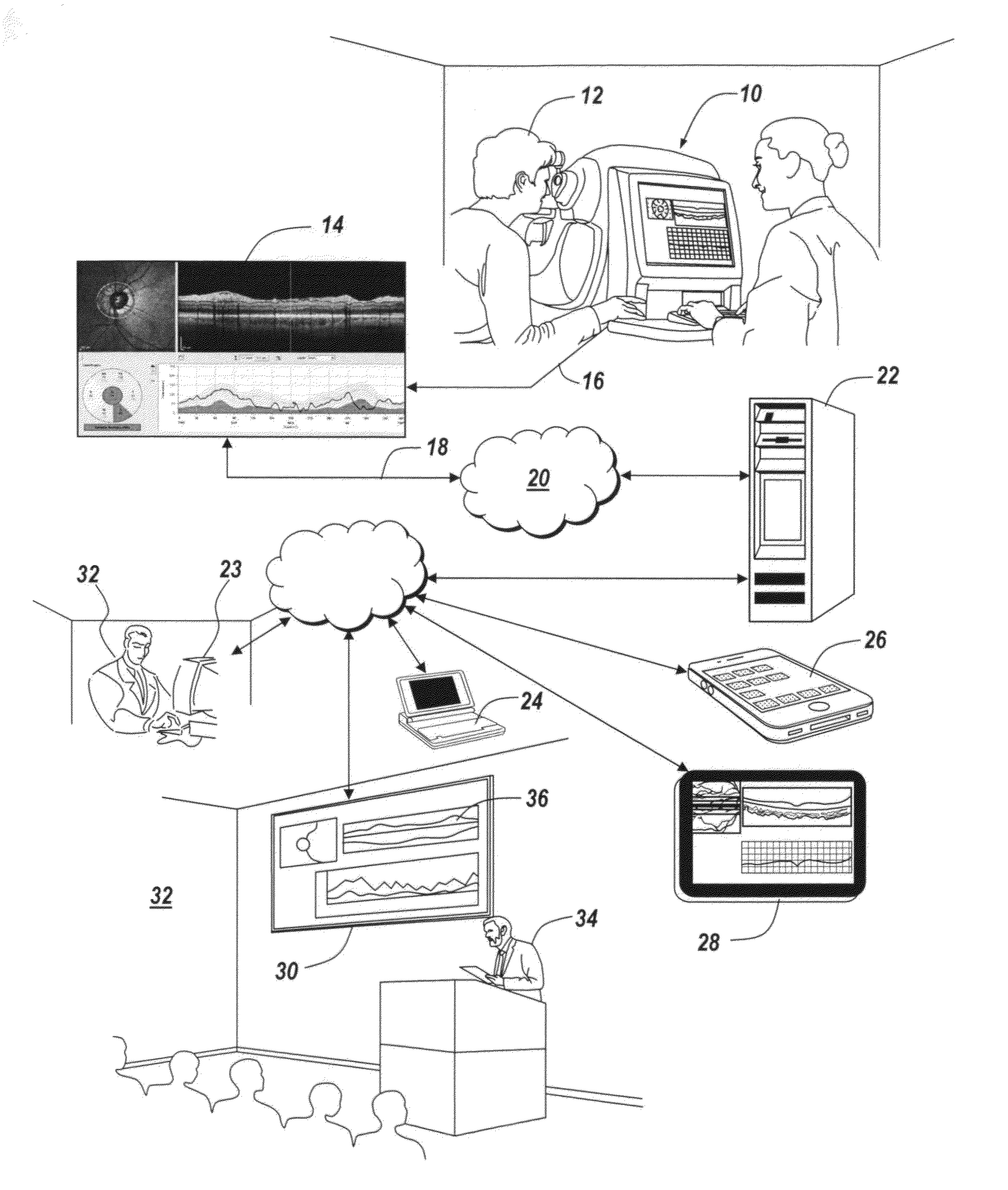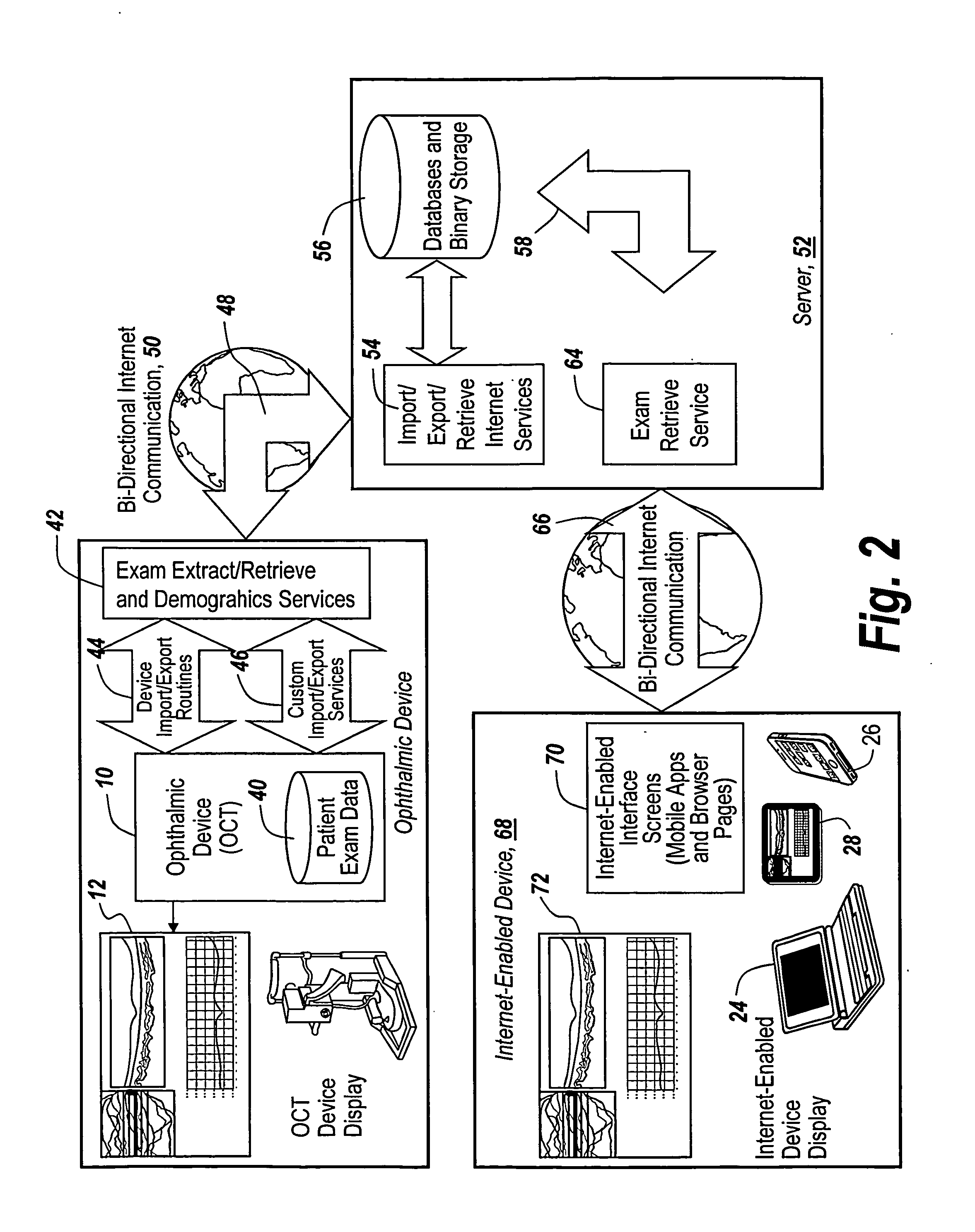Remote exam viewing system
a remote exam and viewing system technology, applied in the field of optical coherence tomography, can solve the problems of significant cost, inconvenient or helpful for most ophthalmologists, and the inability of ophthalmologists to view the exam data, and achieve the effect of eliminating data entry errors
- Summary
- Abstract
- Description
- Claims
- Application Information
AI Technical Summary
Benefits of technology
Problems solved by technology
Method used
Image
Examples
Embodiment Construction
[0069]Referring now to FIG. 1, an OCT device 10 is utilized to scan the eye of an individual 12, with OCT 10 outputting on a display 14 the results of the OCT scan. The raw data generated by the device is outputted at 16 and is then coupled via connection 18 to the web 20 where it is coupled to a server 22 that takes the raw data, stores it and stands ready to receive download requests from web-enabled devices such as a computer 23 at a separate office, a laptop 24, a Smart phone 26, a tablet 28 or a computer driven wall display 30 in a lecture room 32.
[0070]It is the purpose of the subject invention to enable a user 34 at a conference to be able to access the stored data in server 22 so as to be able to view and manipulate the results of an OCT exam, here shown at 36, which corresponds to the data shown in display 14 that is the direct output of OCT device 10.
[0071]It is also the purpose of the subject invention to provide user 34 with an input device for selecting what data in ser...
PUM
 Login to View More
Login to View More Abstract
Description
Claims
Application Information
 Login to View More
Login to View More - R&D
- Intellectual Property
- Life Sciences
- Materials
- Tech Scout
- Unparalleled Data Quality
- Higher Quality Content
- 60% Fewer Hallucinations
Browse by: Latest US Patents, China's latest patents, Technical Efficacy Thesaurus, Application Domain, Technology Topic, Popular Technical Reports.
© 2025 PatSnap. All rights reserved.Legal|Privacy policy|Modern Slavery Act Transparency Statement|Sitemap|About US| Contact US: help@patsnap.com



